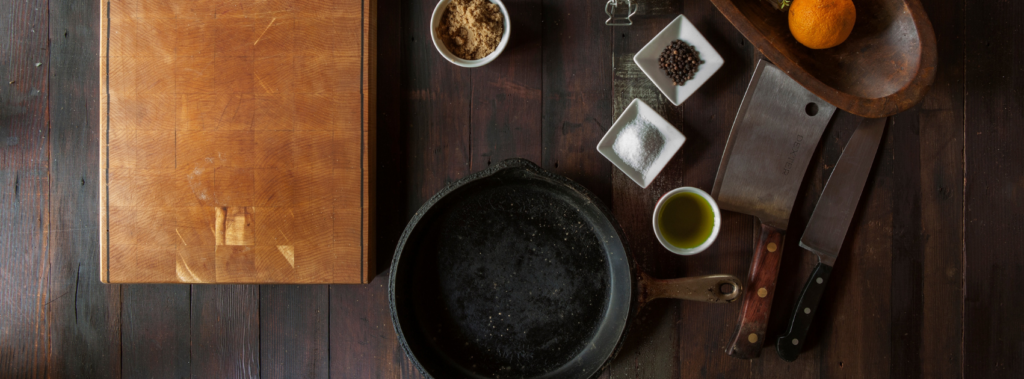The Tools to Replace in Your Gluten-Free Kitchen
WOODEN UTENSILS
Wood can be tricky to thoroughly clean. Wood fibers could harbor gluten particles and enter your food with the next stir.
CUTTING BOARDS
Be cautious with cutting boards. If they are pitted or scratched, gluten could settle into crevices. It’s better not to risk using your former bread board for your new gluten-free loaf or fresh veggies.
COLANDERS, STRAINERS, & FLOUR SIFTERS
Do you find yourself struggling to scrub each hole individually on these types of kitchen aides? Starchy pastas can leave residue behind, and removing traces of gluten from tiny, mesh-like strainers can be very difficult.
PIZZA STONE
Traditional pizza stones are porous and could harbor gluten after using it for baking non-gluten-free pizza. Do not use the same pizza stone for both conventional and gluten-free pizza-making or place your gluten-free pizza on parchment paper if you do. If you’re a big fan of pizza, treat yourself to your own dedicated gluten-free pizza stone.
WOODEN ROLLING PINS
When you’re living gluten-free, it is best to shelve the classic wooden rolling pin if it was used on gluten-containing items. Pushing flour into wood all those years could result in gluten getting transferred to your gluten-free pastries and pies.

CAST IRON
The jury is still out on whether gluten clings to cast iron. Because you typically wash cast iron pans without soap and the surface of the cast iron is pitted, it may be worth investing in another.
POTHOLDERS/OVEN MITTS
You may not realize that the mitt that is touching your gluten-free dish from the oven was also used for – and touched – that gluten-containing one. Be sure potholders are washed prior to gluten-free baking and cooking or buy a separate one and label it the “gluten-free-only mitt.”
MUFFIN TINS & CAKE PANS
Due to their shape and design, these can be tricky to clean. If buying a new set isn’t an option, use cupcake liners and parchment paper to keep traces of gluten at bay.
NON-STICK PANS
Something you may be wondering about that isn’t an appliance but is a common item used in cooking is the non-stick pan. Non-stick surfaces can get scratched and develop grooves where gluten could remain. The safest approach is to not share non-stick cooking appliances or tools between gluten-free and non-gluten-free items.
Note: For general food safety, dispose of scratched non-stick cookware since the surface coating could be ingested.
As you can see, when you’re living in a home with both gluten-free and gluten eaters, gluten particles and crumbs can make their way into many of the common kitchen utensils and appliances we use day-to-day. Thorough inspections and cleaning can only go so far with some hard-to-clean items.
If your household is going entirely gluten-free, you may want to replace some of the items that are more difficult to clean. If only one or several household members are going gluten-free, getting a separate set of the hard-to-clean items strictly for gluten-free food prep is recommended.
Wondering what other things you should watch out for in your kitchen? Click here.
